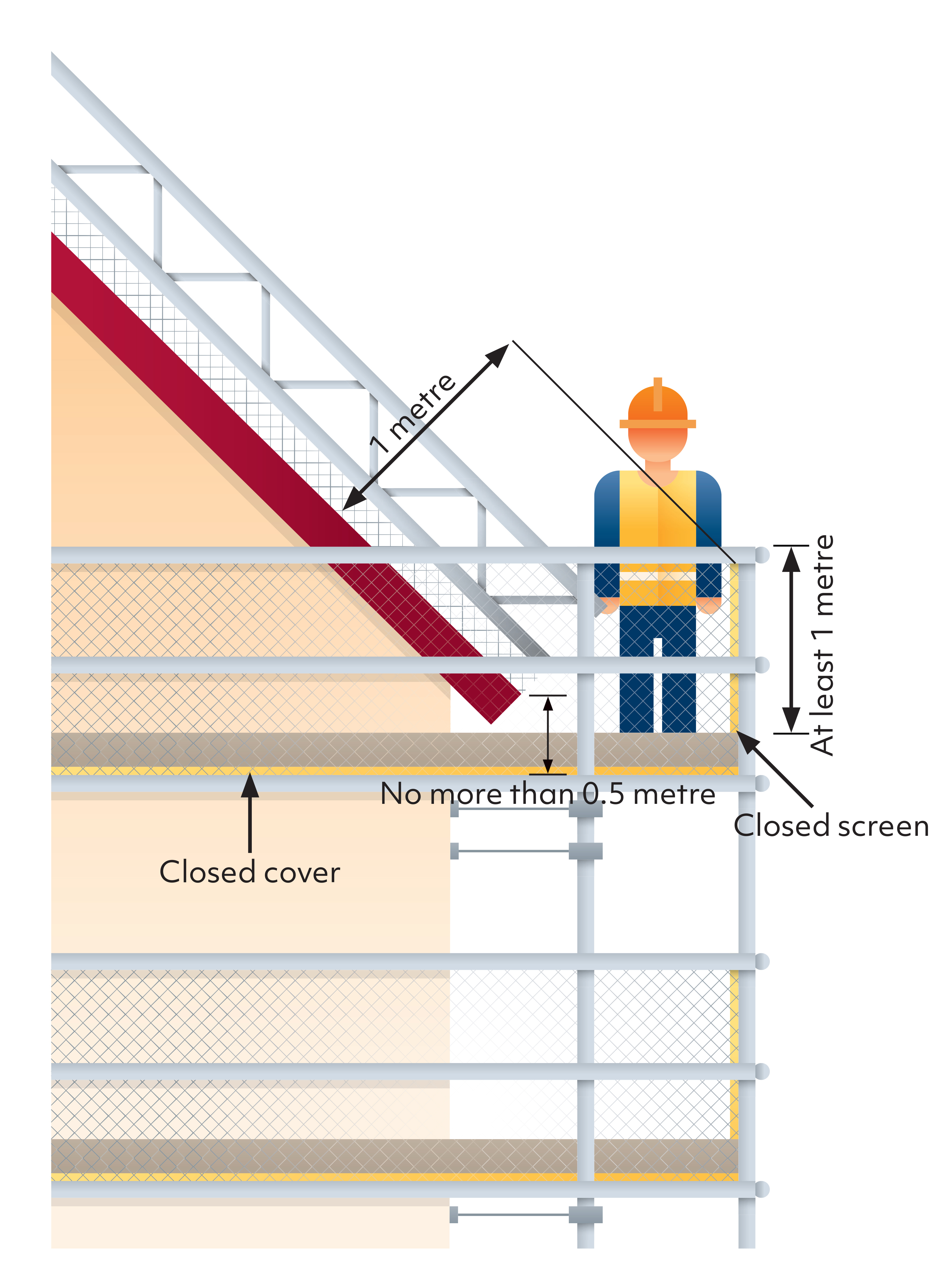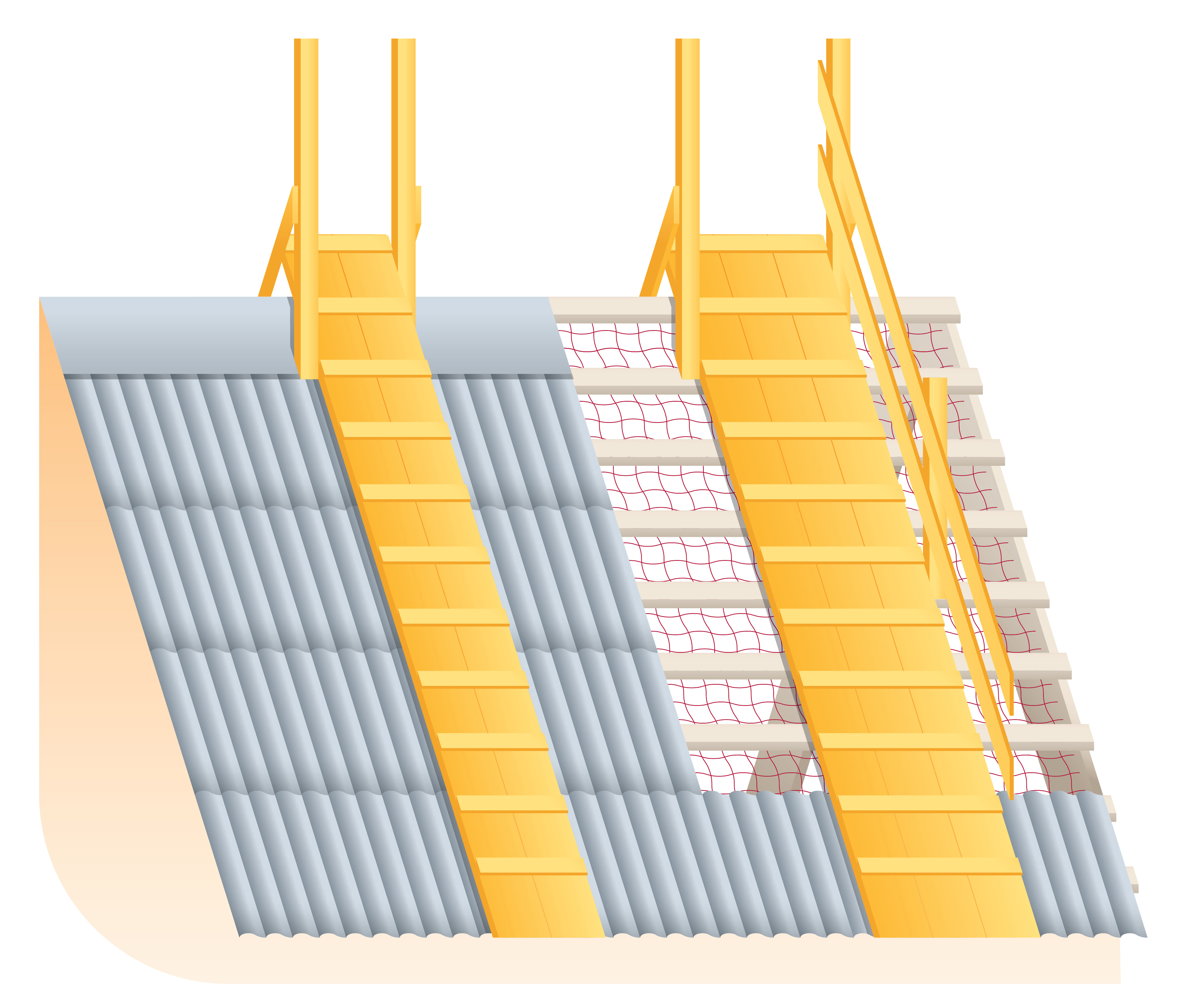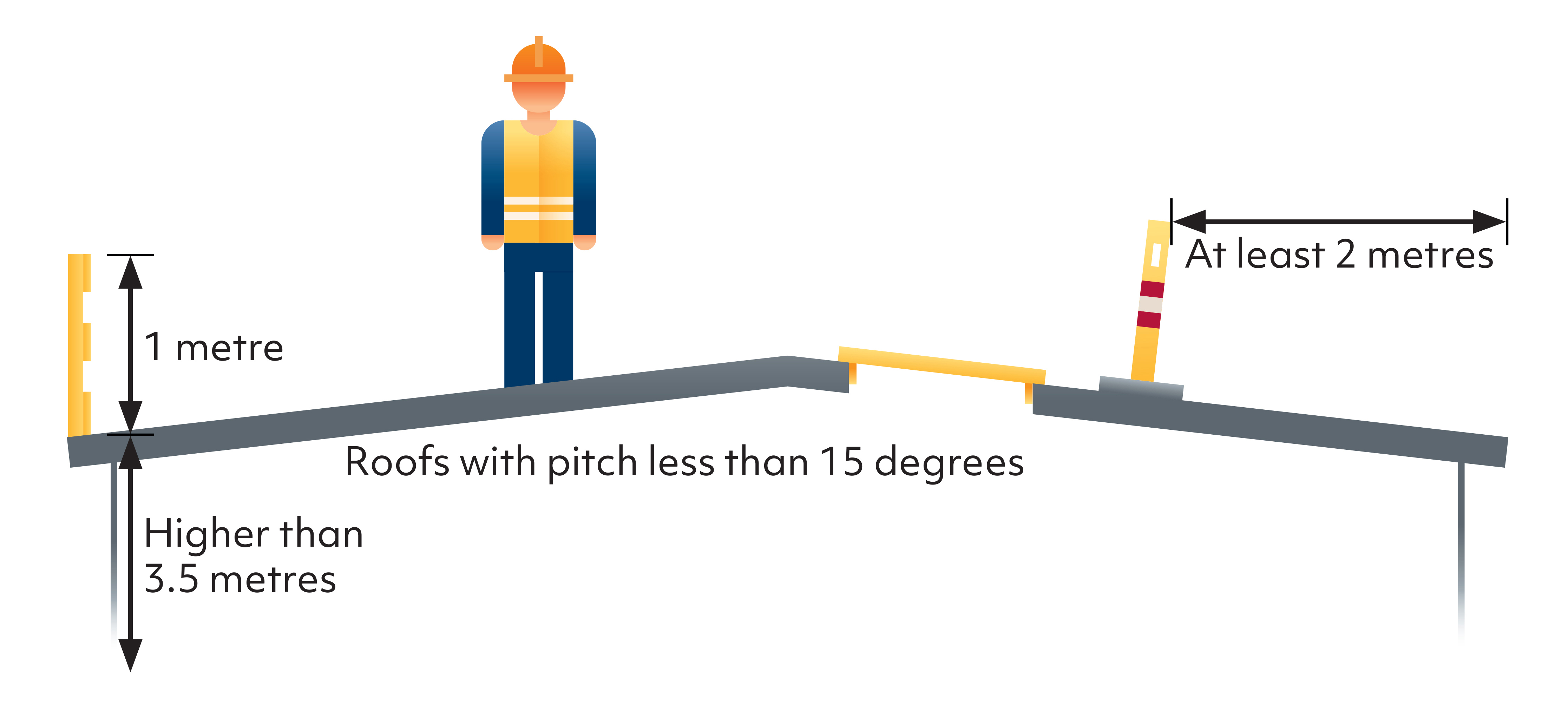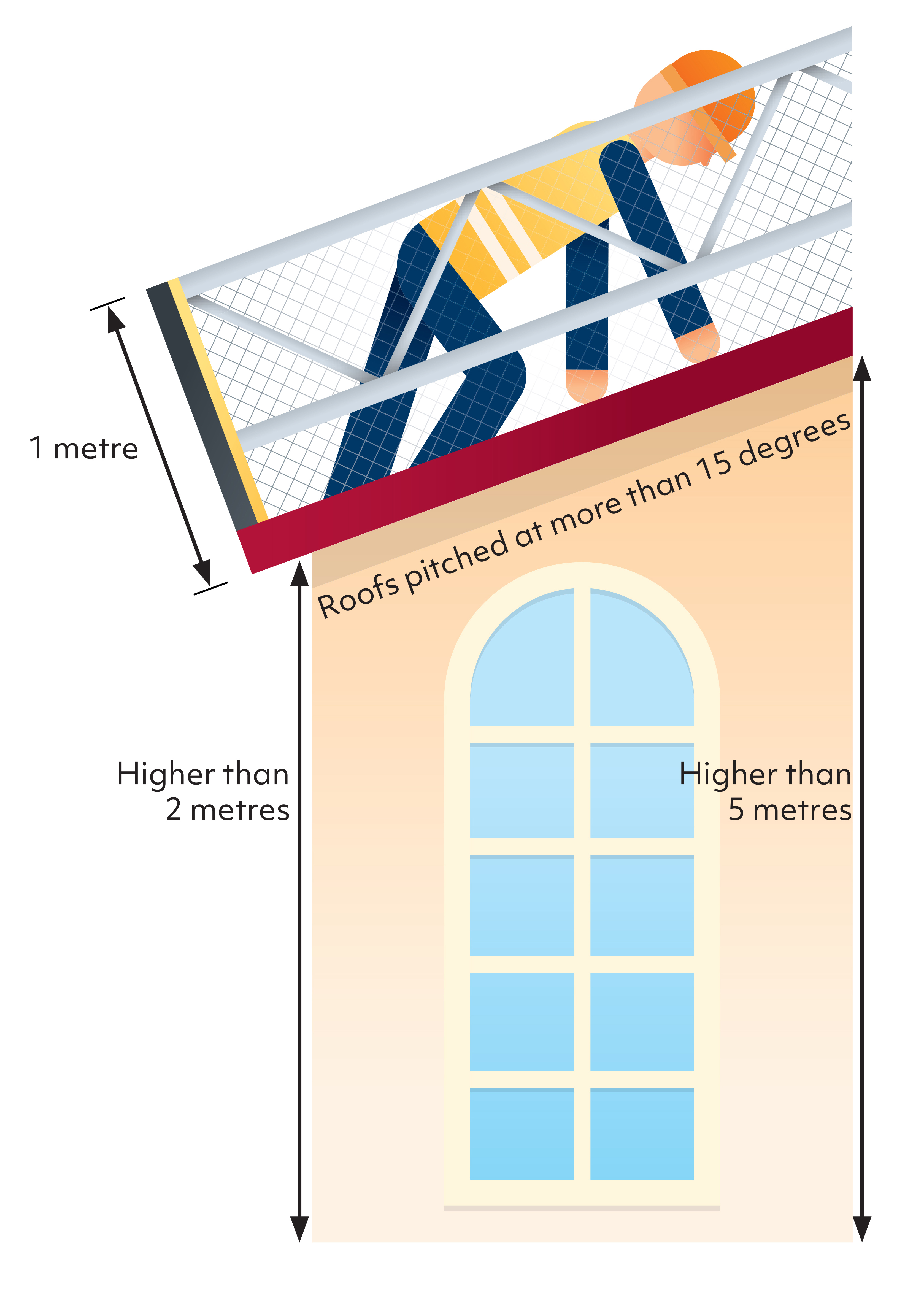Every year, workers are seriously injured or killed because they fall off a roof at work. Accidents happen when employees walk on non-load-bearing roof panels, such as cement corrugated sheets, glass panels and PVC panels.
The employer is responsible for protecting employees from falling from or through roofs. This can be prevented by using railings, safety nets and scaffolding. Read below about how to carry out roof work safely.
Serious risk
In the event of a serious risk, always secure against falling at the outside edges of the roof, regardless of the height of the building. This may be in connection with strong winds, a slippery roof or hard and sharp objects on the ground.

Working at the foot of the roof
Scaffolding to prevent falls from the foot of the roof must have a so-called box screen with a closed cover on the scaffolding deck and railings. Parts, such as scaffold pipes, must not project upwards.
The scaffolding deck must not be more than 0.5 metres below the upper side of the foot of the roof.

Roofing
When carrying out roofing work, always prevent falls into the building, regardless of fall height. This can be done by combining safety nets and
walkways.
On pitched roofs, you can also install C18 strength graded roof battens. Roof battens must be at least 38 x 73 mm with a maximum span of 1 metre,
and the distance from upper edge to upper edge must not exceed 46 cm.

Roofs with a pitch of less than 15 degrees
If the pitch of a roof is less than 15 degrees, and the fall height is more than 3.5 metres, you must set up a 1-metre-high railing along the edge of the roof or set up a marker at least 2 metres from the edge of the roof.
Note that you cannot use safety lines instead of collective safety arrangements such as railings, if your total work lasts more than about 4 hours. Remember to cover holes in the roof surface.

Roofs pitched at more than 15 degrees
If the pitch of a roof is more than 15 degrees, you must secure against falls at the foot of the roof, e.g. with a screen.
This applies if the foot of the roof is more than 2 metres above ground level, and you are working at a height above 5 metres. Railings must be set up at gables if they are higher than 2 metres.





